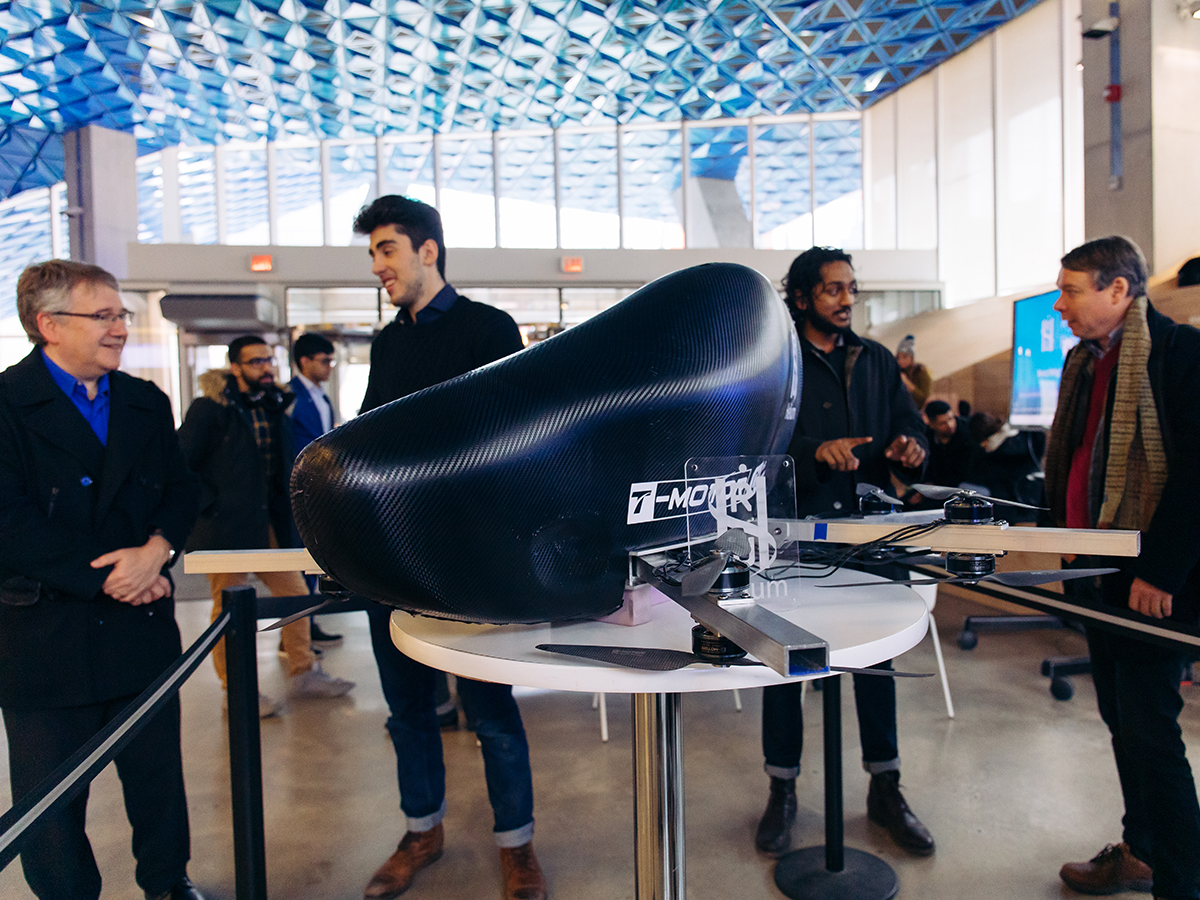Aiming high

Ryerson students compete in international "personal flying device" design contest
With their eyes firmly on the sky, Ryerson students have formed a team called Ryerson Helium and are working to design a functioning personal flying device.
With a design more reminiscent of a sleek personal helicopter than a flying car, the Ryerson Helium team is participating in the prototype building phase (second round) of the GoFly Prize competition. The international contest, sponsored by Boeing, includes $2 million in prize money to be won by teams that design a working vertical take-off and landing vehicle.
The Ryerson team — made up of more than 28 students from the Faculty of Engineering and Architectural Science, the Faculty of Science and the Faculty of Communication and Design — has successfully made it through the second round of the competition, which took place this spring. Next, they will get the chance to compete in the third and final round, a "fly-off" competition in early 2020.
The team launched the initial design process in January 2018, and the half-size prototype created for the second phase of the competition debuted January 2019. If Ryerson Helium is picked for the final phase, the team will manufacture a full-size vehicle based on its designs.
The competition is a global one, but team members aren't letting the quality of competition daunt them. "It will be tough, but that's what makes it great," said team captain Kevin Kasa, a third-year aerospace engineering student.
A big part of the design process has been ensuring that the flying experience is user friendly and enjoyable, as the team hopes to make the vehicle a marketable product.
Jordan Vanriel, the co-lead of the user interface team and a third-year mechatronics engineering student, said the goal is to have the vehicle be as "user-centred as possible." His team is hoping to bring a "luxury kind of feel" to the cockpit.
The team is working to conquer challenges inherent in designing a flying vehicle, like making the structure strong but also light enough to fly, according to the team lead of operations and current structures, Amin Ismail, a third-year mechanical engineering student.
The team has Ryerson faculty mentors offering support and advice, particularly Seyed Hashemi, an aerospace engineering professor, and Filippo Salustri, a mechanical engineering professor. Also involved in helping to create sponsorship agreements were Paul Walsh, an aerospace engineering professor, and Dimitri Androutsos, an electrical, computer and biomedical engineering professor.
Ryerson Helium should know later this year if the team will receive an invitation to the final fly-off.
Funding for this project comes from the Student Initiative Fund, Ryerson's Aerospace Engineering and Electrical, Computer and Biomedical Engineering departments, and the Qt Company.